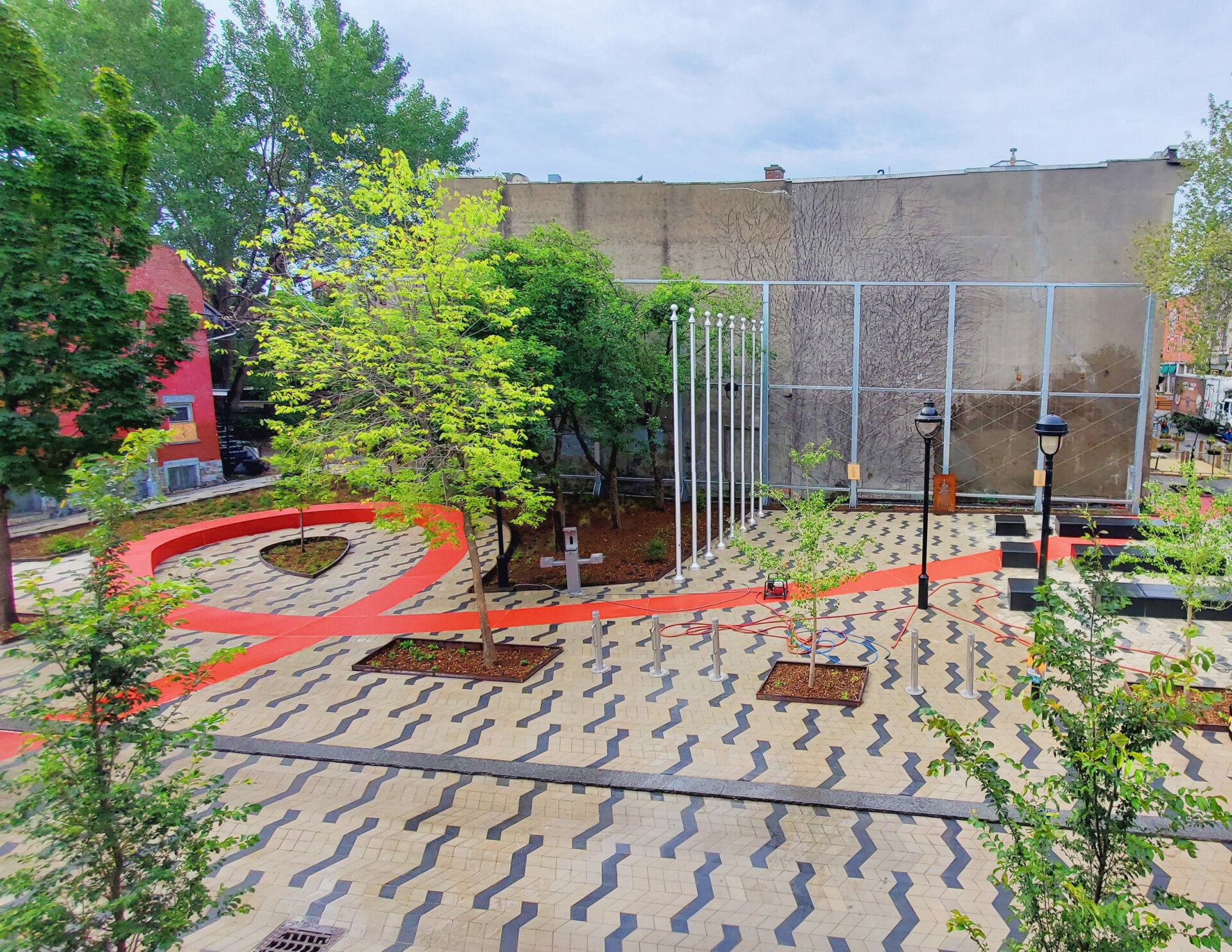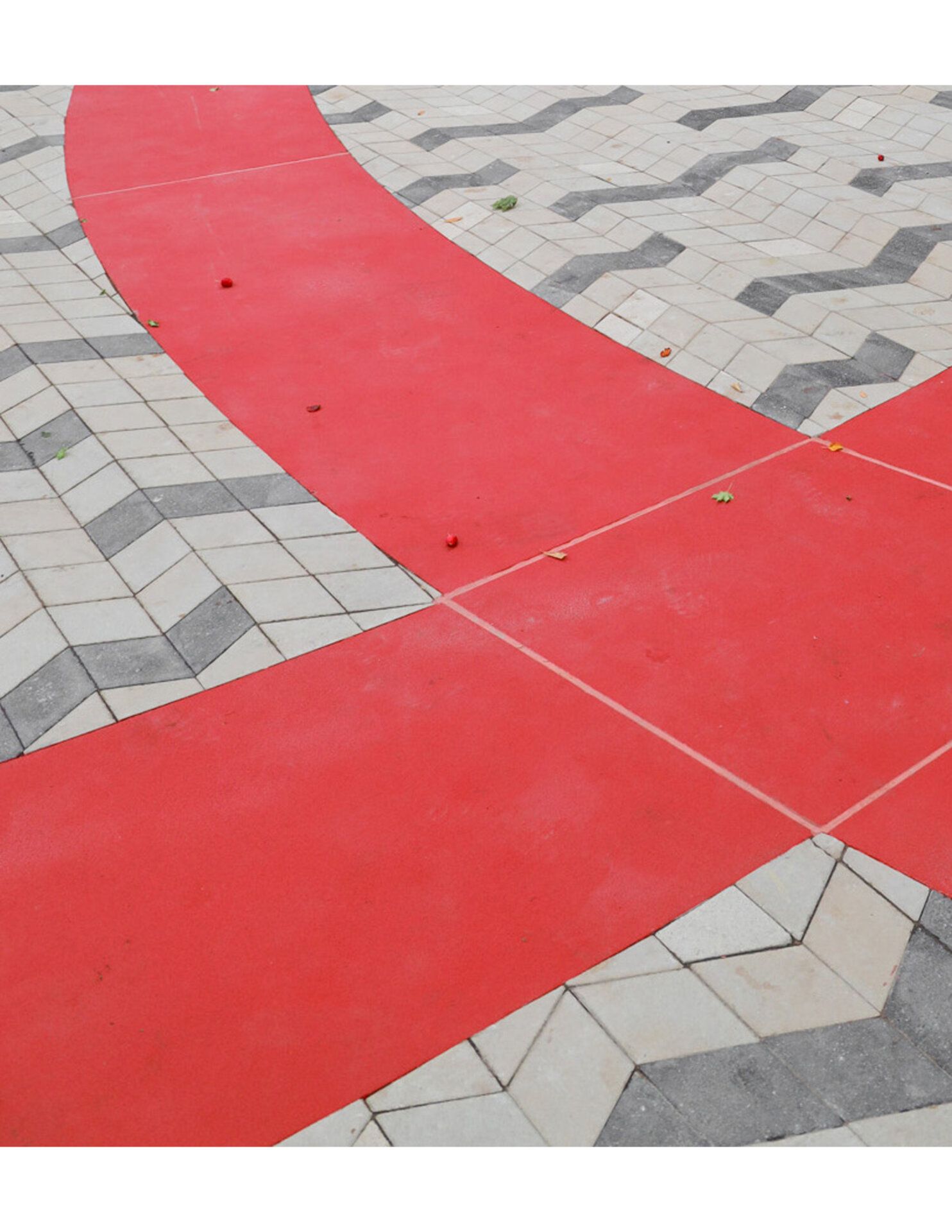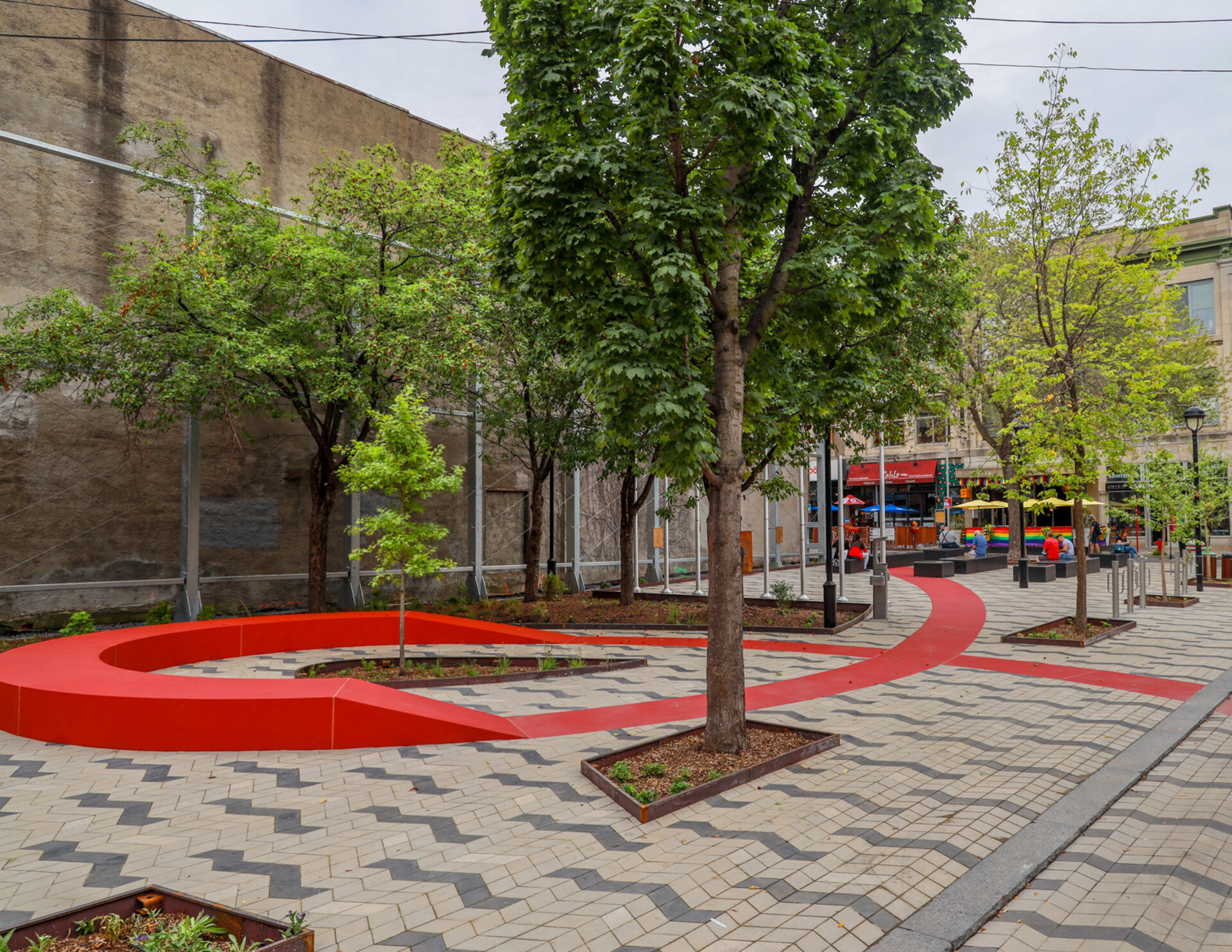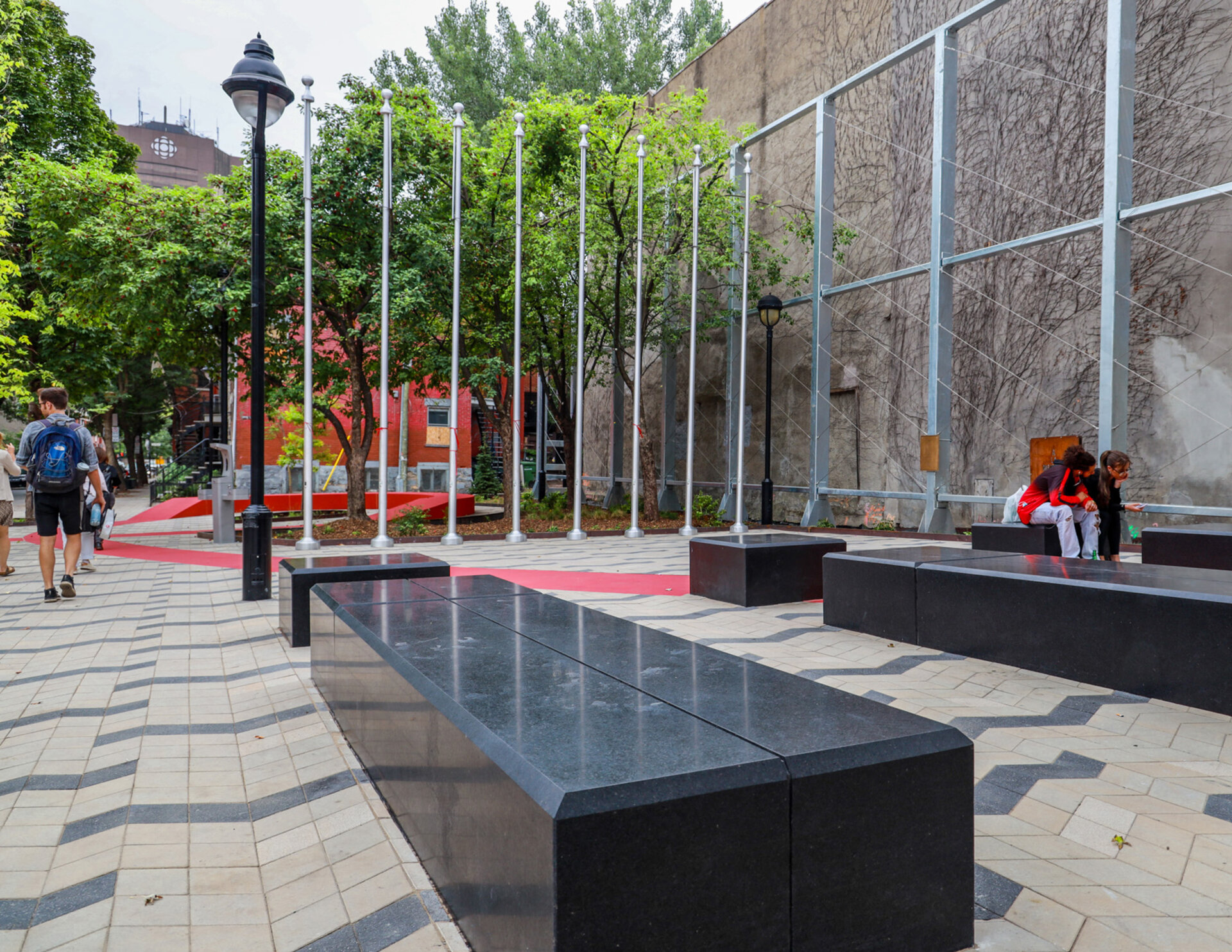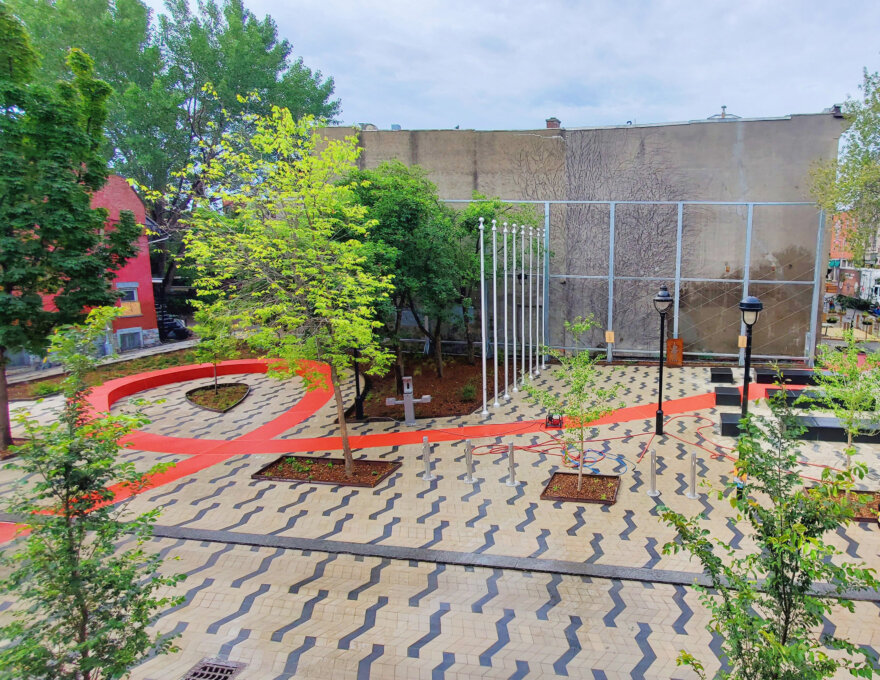
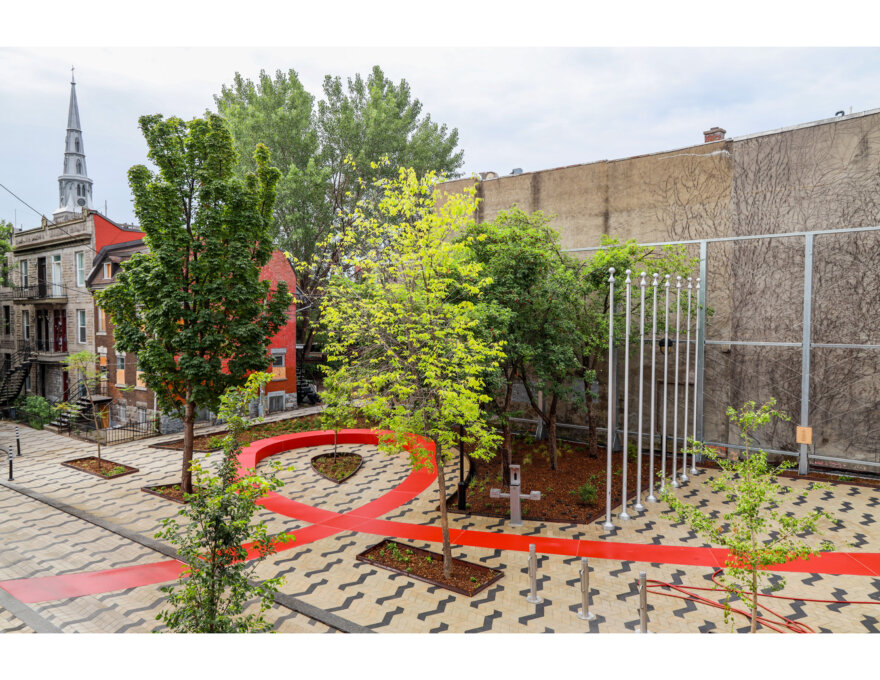
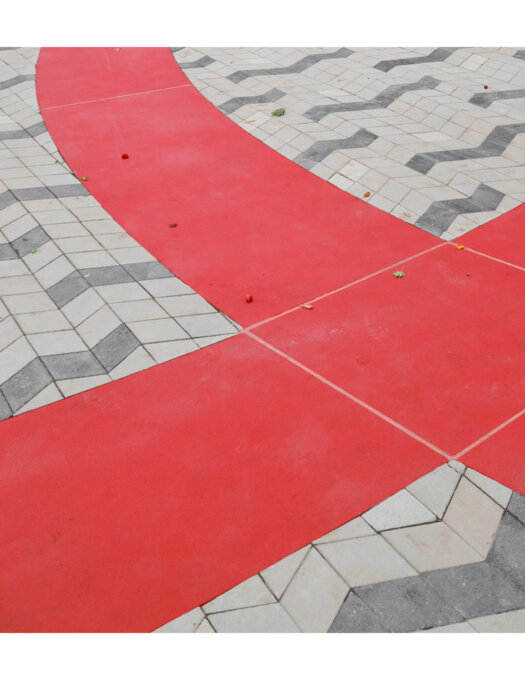

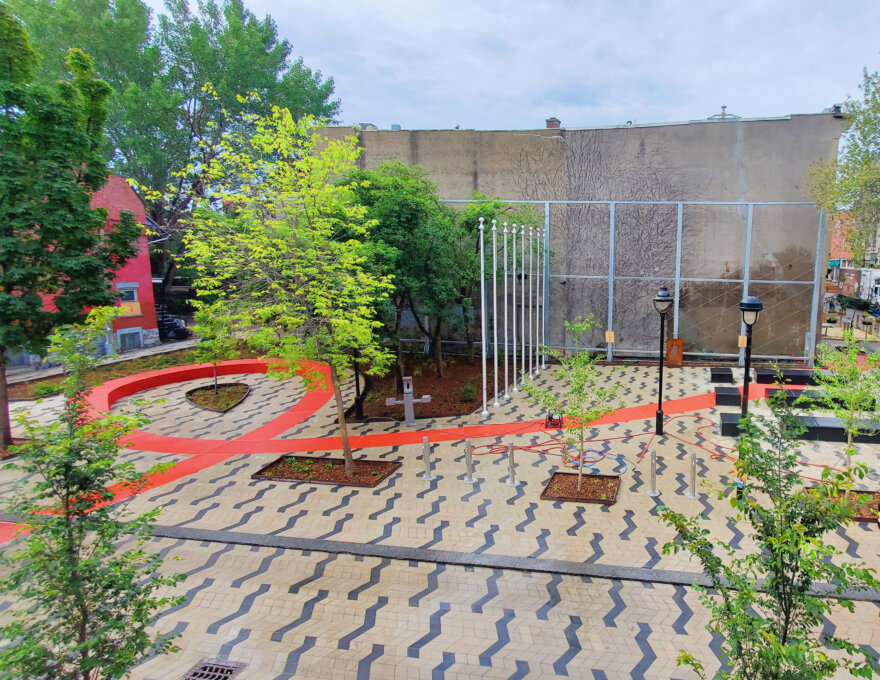
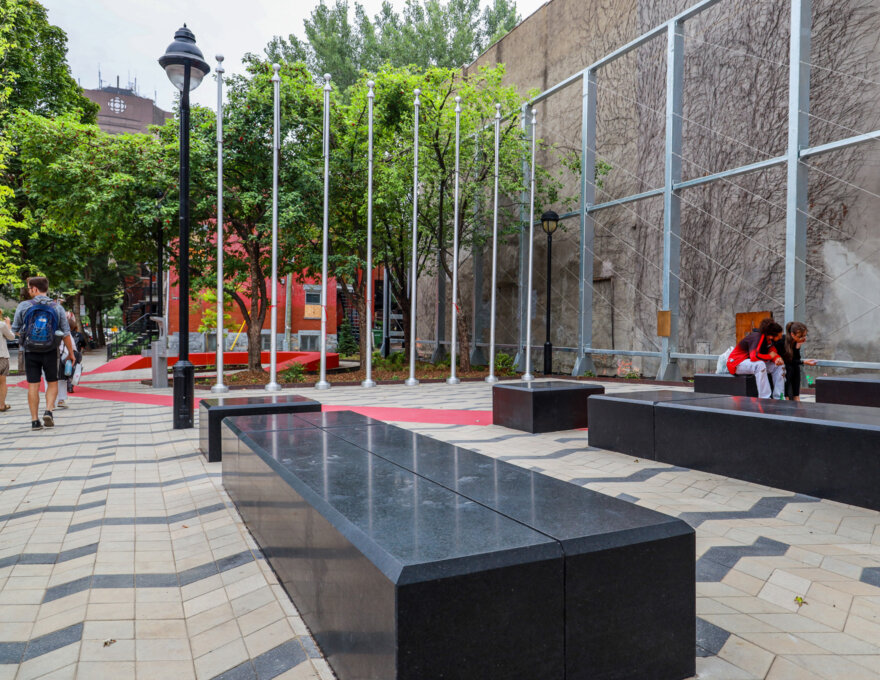
Share to
Réaménagement du Parc de l’Espoir
By : Vlan Paysages
GRANDS PRIX DU DESIGN – 15th edition
Discipline : Landscape & Territories
Categories : Landscape Architecture / Landscape Architecture - Public Space : Silver Certification
Created in 1991 by the American painter Franck Moore, the red ribbon represents mutual support and solidarity in memory of those lost in the battle against HIV. This meaningful symbol materializes as a red resin coating across the parc de l’Espoir, whose purpose is to commemorate the victims of AIDS. Out of the red ribbon unfolding across the park emerges a bench that then curves around a newly planted tree symbolizing life. The ribbon stretches out beyond the park as a reminder of the space’s meaning, crossing Panet Street towards Sainte-Catherine to grab the attention of passersby. The creation of a shared street on Panet pushes its limits beyond the sidewalk, increasing pedestrian space, comfort, as well as the field of view on the street. Following the soft slope of Panet Street, the entire park finds itself on the same level, allowing for universal access across the site without any ramps or staircases, thus reinforcing the effect of an urban-scale commemorative plaque, textured with a unique pattern. The paving pattern is inspired by the work of Keith Haring (1958-1990), a key figure of the “graffiti art” and “neo-pop art” movements of the nineties in the United States, which also coincides with the date of creation of the park. As an openly gay and HIV-positive artist, Haring dedicated the last years of his life to producing art around the themes of AIDS as well as death. The commemorative aspect the park is preserved with the alignment of LGBTQ+ flagpoles, perpetuating the ritual of tying ribbons around the masts in memory of the victims of AIDS.
The park design reflects the planning objectives determined with the citizens: the creation of a minimal space that allows for contemplation, occasional gatherings, commemoration of the park’s history, and integration of both seating and greenery.
The redesign of the park conveys its dynamic, festive and neighbourhood-unifying character as a commemorative space for the victims of AIDS and also a place for demonstrations. The project’s goals for its commemorative nature are the result of multiple in-person public consultations that brought together members of the LGBTQ+ community, locals within the neighbourhood and visitors of public space alike. The preferred option for the park’s renewal was decided via the platform Make Montréal.
The pathways, urban furniture, lighting equipment and vegetation within the park have been replaced and reconfigured, and the commemorative component revised to form a cohesive entity with the newly transformed park. To reduce the urban heat island effect in the area, the space allocated to greenery increased dramatically from 55 m² to 238 m² through the addition of planted zones on curb extensions. This growth of 332% in greenery helps to bring more liveliness to the new park and its surroundings.
Collaboration

